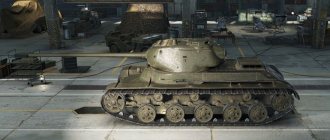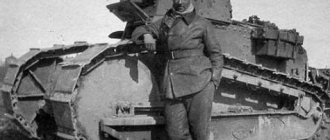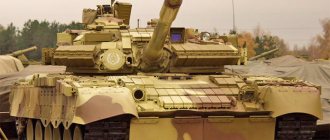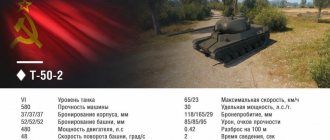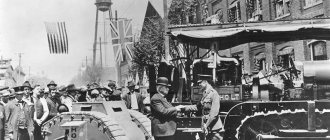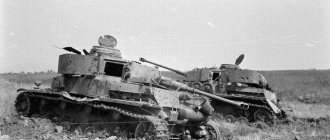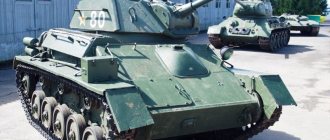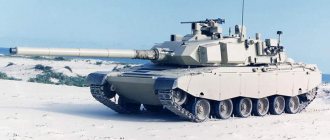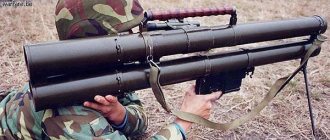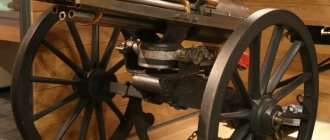Home » Real story » Mysteries of the history of the distant past » Was the “best light tank of WWII” the best tank?
Mysteries of the history of the distant past Unrealized projects of tanks and other armored vehicles of the USSR
Vadim Petrov 10/15/2014 486
0
in Favoritesin Favoritesfrom Favorites 0
It has long been not uncommon to claim that the T-50 tank was the best light tank of WWII. Previously, I wasn’t particularly opposed to this way of posing the question, although purely intuitively I never liked the tank. But after a series of publications, I wanted to understand this issue. From my point of view, the “best tank” turned out to be an unsuccessful and unbalanced impromptu, not from the design, but from those in power who demanded that it be made no heavier than 14 tons and with such a “smallness” simply devalued the long work of not the worst developers. However, it seems that on the eve of the war this was the norm rather than the exception. What is the reason? I don’t know, the question is quite complex and confusing, so I’ll return to the formidable combat vehicle, which was never able to reveal the potential that the developers could invest in it.
Tanks made a real revolution in military affairs and largely changed the nature of warfare. Since their first appearance on the battlefield, they have attracted and continue to attract the interest of many, many people. But it is precisely thanks to this increased general attention that tanks have become overgrown with numerous myths and legends, which often make it difficult to discern their true essence. In the minds of some people, tanks have become a kind of miracle weapon, capable of independently deciding the outcome of any battle.
In this regard, the answers to a long-standing question are interesting: what, after all, predetermined the catastrophe of the Red Army in the border battles of 1941? There are different versions on this matter, but we will not touch on everything, but will try to understand what we wanted, what happened and why it turned out that way.
The reason for the frequent breakdowns of Soviet tanks at the beginning of the war was not the short service life, as is commonly believed, but low reliability due to poor manufacturing quality and unsatisfactory maintenance. This applied to all of them, not just older types of tanks. The level of production culture in the country was very low, and if individual enterprises provided the required level of quality, most mass production, lacking qualified personnel, could not provide the required level. In such a short period of time, the country could not heal the wounds caused by foreign intervention and civil war.
Let's move on to the main question: what is the main task of tanks? Answer: breaking through enemy defenses. The development of the theory of deep operations and the improvement of the tanks themselves added another task - the development of success by actions in the tactical and operational depth of the enemy’s defense. This is precisely what was prescribed by the regulations of the tank forces.
What should the use of tanks look like according to the ideas of the 30s and early forties? Something like this: special-purpose tanks (T-35) and high-quality reinforcement tanks (T-28) break through the enemy’s defenses, general-arms or infantry escort tanks (T-26) help this very infantry to finally suppress resistance and develop success by suppressing individual firing points and giving the advancing infantry formations combat stability (including against tank counterattacks) in the future, and operational BT tanks and tankettes as part of mechanized units and cavalry-mechanized groups break into the depths of the defense and act against operational reserves and encirclement of the enemy. Approximately this same scenario was observed during the war among us and the Germans. Let's add an amendment to these plans - those types of tanks that were just mastered by production before the war: heavy KV tanks break through the defense, direct infantry support is carried out by light T-50 tanks (they were supposed to become the most popular tanks in the Red Army) and partly medium T-34, units operating deep in enemy territory are armed primarily with T-34 medium tanks.
What did the actions of Soviet tanks in World War II look like in reality? Tanks (light, medium, heavy - whatever they were), if possible, acted together with the infantry to break through the German defenses. When such an opportunity arose, preference began to be given to those tanks that were created specifically for breaking through defenses, that is, heavy ones - KV and IS. After breaking through the defense, mobile formations, the basis of which were medium tanks (T-34), entered the breakthrough and acted in depth in accordance with the plans of the command, if possible, to encircle. Light tanks, whose role quickly faded after the Red Army was saturated with T-34 medium tanks and which began to rapidly disappear, were direct escort tanks. In this regard, the battles of 41-42 are not indicative - everything that could be collected was used there for all functions. Naturally, there were very significant unjustified losses of tanks caused by their improper use, which in turn was due to the low training of the troops. From this it is obvious that the main function of tanks is to break through enemy defenses and operate in its depths. Based on this, we will try to compare Soviet and German tanks and, first of all, the T-50 tank, which was planned as the most popular tank of the Red Army.
KV-1 and KV-2
In the Soviet Union in 1939, a small but well-protected single-turret KV . Its armament was not inferior to that of the double-turreted T-100 and SMK tanks.
In those years, tank guns did not yet have devices that stabilized the gun and made it possible to conduct aimed fire on the move. During an attack, before firing, the tank commander or gunner gave the driver the command to stop. In a multi-turret tank, such a command was given by the gunner of each gun. While he fired, the other towers remained idle. They could not fire, since at this time their aiming was lost, and the combat crews had to point the gun at the target again. Then they decided that instead of one super-heavy double-turret tank it was better to use two single-turret tanks.
Based on the test results, it was the KV that was adopted by the Red Army. Its serial production began in February 1940. At that time there was no tank equal to the KV.
The KV-1 tank became the main heavy tank of the Red Army in the initial period of the Great Patriotic War
However, at this time a more powerful tank appeared, which today is known to everyone as the KV-2 . The idea of its creation came to the military during the assault by experienced KV, T-100 and SMK tanks on Finnish fortifications on the Karelian Isthmus. The Red Army needed even more powerful tanks, equipped with a large-caliber cannon, the shells of which could break through concrete casemates. Such firing points could be destroyed by a heavy 152-mm howitzer firing shells weighing 50 kg! And then they installed a huge turret weighing 12 tons on the KV tank, which could barely fit a heavy howitzer.
KV-2
At the end of the winter of 1939/40, three such tanks appeared on the Karelian Isthmus. The baptism of fire was successful, and the super-powerful combat vehicle was put into mass production. In the series, the tank was slightly changed: a more spacious turret with a door in the rear armor plate . This “gate” weakened the armor, but it served to load ammunition into the tank. It was inconvenient to drag heavy, slippery shells weighing 50 kg onto the roof of the turret and lower them through the top hatch into the tank. At that time, the name KV-2 did not yet exist. There was simply a KV tank in two versions - with a large turret and a small one. And only before the war with Germany, a tank with a 76.2 mm gun began to be called KV-1 , and a tank with a 152 mm gun - KV-2. At the same time, they began installing additional armor on KV tanks, bolting it to the turret and hull. The first battles showed that it was not needed - the available armor protection was sufficient. The huge KV-2s were soon taken out of production. The KV-2s were intended for the offensive and assault on enemy fortified areas, but in the first months of the war the Red Army was forced to retreat, and there was no talk of any assault on enemy fortified areas.
When the Red Army went on the offensive, tanks armed with powerful 152 mm cannons were again needed. Such combat vehicles were quickly created, using the chassis of the KV tank. These were Su-152 self-propelled artillery units.
T-80
Good tanks of the Russian Army 2022, which were the first to receive dynamic protection. They were released in 1976 and have been in service ever since. In total, more than 10 thousand units of this military equipment were produced. The T-80 weighs 42 tons, has a 2A46-1 cannon with a 125 mm caliber, and the ammunition load includes up to 40 shells. There are also several machine guns. Thanks to the GTD-1000T engine, the car is capable of reaching speeds of up to 65 kilometers per hour, but its power reserve is only enough for 350 kilometers. In general, these are modern Russian tanks , which are also interesting in other countries.
- Weight: 46 t.
- Length: 9,654 mm
- Height: 2,193 mm
- Width: 3,525 mm
- Gun caliber: 125 mm
- Motor power: 1,000 l. With.
- Speed: 65 km/h
T-34 - the best tank of the century
By the end of the 1930s. the tankers seemed to know what tanks they needed and how to use them. This was the case until the advent of the T-34 (“thirty-four”), a vehicle that changed the idea of what a tank should be. The T-34 was neither the fastest nor the most powerful. However, all the qualities that determine the power of a combat vehicle were combined in the best possible way. Everything about the T-34 was special: mobility was no worse than that of light tanks, and the anti-ballistic armor and long-barreled 76-mm gun were the same as on heavy tanks.
At the beginning of the war, T-34s shot at German tanks of all types from extreme direct shot ranges
Invincible
The armor plates of the T-34 hull and turret had a large slope. Installing frontal armor plates at a large angle increased the effectiveness of the reservation. Placing the armor at an angle allows you to increase its thickness. Anti-tank gun shells fly along a flat trajectory (in a straight line, above the ground). If such a projectile hits an inclined metal sheet, its path through it will be longer than through a vertical sheet of the same thickness. In addition, the projectile can ricochet - bounce off the streamlined body. The rear part of the T-34 hull was occupied by the engine compartment with a V-2 diesel engine. Before the war, tanks were equipped with internal combustion engines that ran on gasoline. These were often powerful aircraft engines modified for installation in armored vehicles. Gasoline is flammable, so it is easy to set such a tank on fire with an incendiary shell or bullet. A diesel tank is more difficult to hit in battle. Diesel “feeds” on diesel fuel, which is more difficult to set on fire than gasoline.
The German infantrymen, who had traveled all over Europe and knew how to effectively fight French and British tanks, were shocked when they first encountered the T-34
The main weapon of the T-34 is a turret-mounted 76-mm cannon. On the first tanks, the gun barrel barely protruded beyond the hull, but in 1941, long-barreled guns began to be mounted on the T-34. Although these guns had the same caliber of 76 mm, due to their higher initial speed (that’s what the long barrel means), its shells penetrated thicker armor. The designers made the T-34 simple and technologically advanced. This made it possible to produce 12.5 thousand “thirty-fours” even in the difficult year of 1942.
German General Schneider wrote: “The T-34 showed our tank crews, accustomed to victories, superiority in weapons, armor and maneuverability .” To the Germans, the T-34 seemed enchanted, and the armor seemed invulnerable. Even anti-tank guns only penetrated the side armor of the T-34, and even then at point-blank range, from a distance of no more than 100 m.
The T-34 tank went through the entire Great Patriotic War from its first day to the last: the first battle of the “thirty-four” took place on June 22, 1941 on the western border, and ended the war on May 10, 1945 in liberated Prague.
During the war years, Soviet industry produced more than 60 thousand T-34 tanks. This is an absolute record in the history of world tank building.
New "thirty-four"
The first battles of the Great Patriotic War revealed several serious shortcomings in the T-34. The tank commander simultaneously assessed the situation on the battlefield, looked for a target and fired the cannon. Moreover, the commander’s visibility was not very good. In 1942, T-34s appeared with new hexagonal cast turrets, equipped with a commander's cupola. All new tanks received transceiver radio stations. By the beginning of 1943, the enemy responded to the appearance of new T-34s by modernizing the “fours” and creating new tanks “Tiger” and “Panther”. By the summer of 1943, the Germans had heavy tanks that could shoot T-34s from a great distance.
The T-34 urgently needed a more powerful 85 mm gun. However, the new cannon did not fit into the old tower. They designed a new turret, where there was also room for a gunner . The commander began to mind only his own business. After finishing, a new armored hull was actually created. At the front, new tanks, designated T-34-85 , appeared in the fall of 1944. The maneuverability of these combat vehicles was not affected.
T-34-85 was in service with the Egyptian army for many years
T-34-85 fought in the ranks of the Vietnamese People's Army in 1971.
The last modernization of the “thirty-four” took place after the end of the war. The hull and chassis of the T-34-85 have changed little compared to the first samples of the legendary tank. In the 1950s The T-34 began to be equipped with engines and road wheels from the latest T-54 tanks. Victory Day did not put an end to the combat biography of the best tank of World War II. The military career of the legendary Soviet T-34 tank continued in various parts of the globe, and it has not ended to this day.
IS tanks
Soviet designers constantly improved their combat vehicles. Combat experience has shown that the bulk of enemy shells hit the frontal part and turret of tanks. That’s why on the new heavy tank, the successor to the KV, they decided to make the frontal armor plate and turret thicker, and install the armor plates at a greater angle (this makes them more difficult to penetrate, and shells can ricochet off them).
IS-1
The new tank was narrower than the KV. Its weight was reduced due to the fact that the front, rear, upper and lower armor plates became narrower. The designers used the gain in mass to increase the thickness of the armor of the frontal part of the hull and turret. The 120 mm frontal plate was cast in such a way that the shells bounced off the armor tangentially. The side armor was increased to 90 mm. The armor resistance of the streamlined turret has been increased due to its thickening to 100 mm. Previously, the tank could not be made: the narrow body did not include a gearbox with final drives. But engineers made small-sized turning mechanisms, and designers reduced the width of the armored hull. This combat vehicle was equipped with a long-barreled 122 mm gun. Thick armor, a reliable engine and a powerful gun are combined into a single whole. The tank was named IS.
Fitting the huge 122mm gun took time. Therefore, from the autumn of 1943, the first tanks ( IS-1 ) were produced with 85 mm guns. But already in January 1944, the IS-2 with a 122 mm gun went to the front. There was no radio operator on the IS tank. But the front-mounted machine gun , rigidly mounted on the tank’s body, remained. The driver fired from it, aiming the machine gun at the target by turning the entire tank. Another machine gun was coaxial with the cannon, and the third was located in the rear of the turret. An anti-aircraft machine gun was installed on the roof of the tower.
The armament of the IS-2 was tested when firing at a captured Panther. A 122-mm shell from a distance of 1500 m broke through the frontal armor, pierced the vehicle’s body and “took out” the rear armor plate!
, the IS-3 tank began to enter service with the Red Army . Its new turret seemed to have armor that flowed around the internal mechanisms. Due to a successful layout solution, the thickness of the armor in the frontal part was increased to 230 mm (for the IS-2 - 160 mm). At the same time, the mass of the tower did not increase! On the IS-3, armor plates were placed in the frontal part of the hull so that the structure was shaped like the nose of an iron (it received the nickname “pike nose”). There were no cutouts in the front plates of the IS-3 for the driver's inspection hatch, which means there were no weakening in the armor plates. Their projectile resistance has improved.
The crews for IS-2 and IS-3 were carefully prepared. Only officers were trusted to operate the IS tank! These were no longer yesterday’s drivers or tractor drivers who had undergone an accelerated training course, but qualified military engineers.
The IS-3 driver climbed into his compartment through the top hatch and observed the terrain through periscope devices installed on the roof of the armored hull
Back in business
Technology gradually moved forward, and in the 80s, interest in the light tank suddenly began to slowly revive. This was explained by several reasons.
Firstly, it was already becoming clear that World War III was not expected in the foreseeable future; instead, conflicts would increasingly occur in third world countries. And there you are more likely to encounter old T-55s or Pattons among your opponents than ultra-modern MBTs (main battle tanks). Progress in guns and shells has already made it possible to install a cannon on a light chassis that can penetrate all this antiquity right through and is even capable of hitting not the oldest MBTs.
Secondly, the mobility of military equipment began to be valued again - but now tanks did not have to be transported to the battlefield on trucks, but transported by plane across half the globe. And for this purpose, light vehicles were ideally suited.
Although the Sprut-SD is considered a self-propelled gun, in reality it is a typical light tank
After the end of the Cold War, the number of light tank projects continued to grow. These were no longer scouts. The new vehicles were only slightly inferior to their larger counterparts in firepower (for which they had to sacrifice armor).
Now a light tank is seen as a vehicle that can quickly go where heavy tanks cannot go, fight on par with previous generation MBTs, support light forces with fire, and pose a threat to modern vehicles.
There is an opinion that light tanks have turned into infantry fighting vehicles. This position is not without foundation. Many light tanks are made from infantry fighting vehicles, and vice versa. For example, the Object 685 amphibious tank became the BMP-3
Many military experts see great prospects for the light tank. History repeats itself, and light vehicles have every chance of becoming mainstream again. The existing MBTs have reached a dead end - it is simply impossible to grow further. In terms of weight, the heaviest production vehicles of World War II have long been left behind; so far it has not been possible to surpass only the German super-heavy Maus. And the logic of confrontation requires even more armor, even more weapons. It is not surprising that many want to break this vicious circle.
The M8 light tank failed to make it into service in the early 90s, but now it has every chance to do so as part of the new Mobile Protected Firepower program
At first glance, a light car cannot catch up with its large colleagues in defense, but this is not entirely true. Active defense systems are now rapidly developing - they are already capable of shooting down missiles, and they are being taught to repel projectiles as well. Work on electromagnetic armor has been going on for a long time. All this weighs much less than the meters of armor on an MBT.
Another way to save weight is the carriage. You can reduce it to two people, which is what they are thinking about in Israel, or you can remove it altogether. Robot tanks are already beginning to be used in conflicts, and many are confident that they are the future. And for operators and command staff, you can make a perfectly protected mobile command post. For example, based on TBMP.
